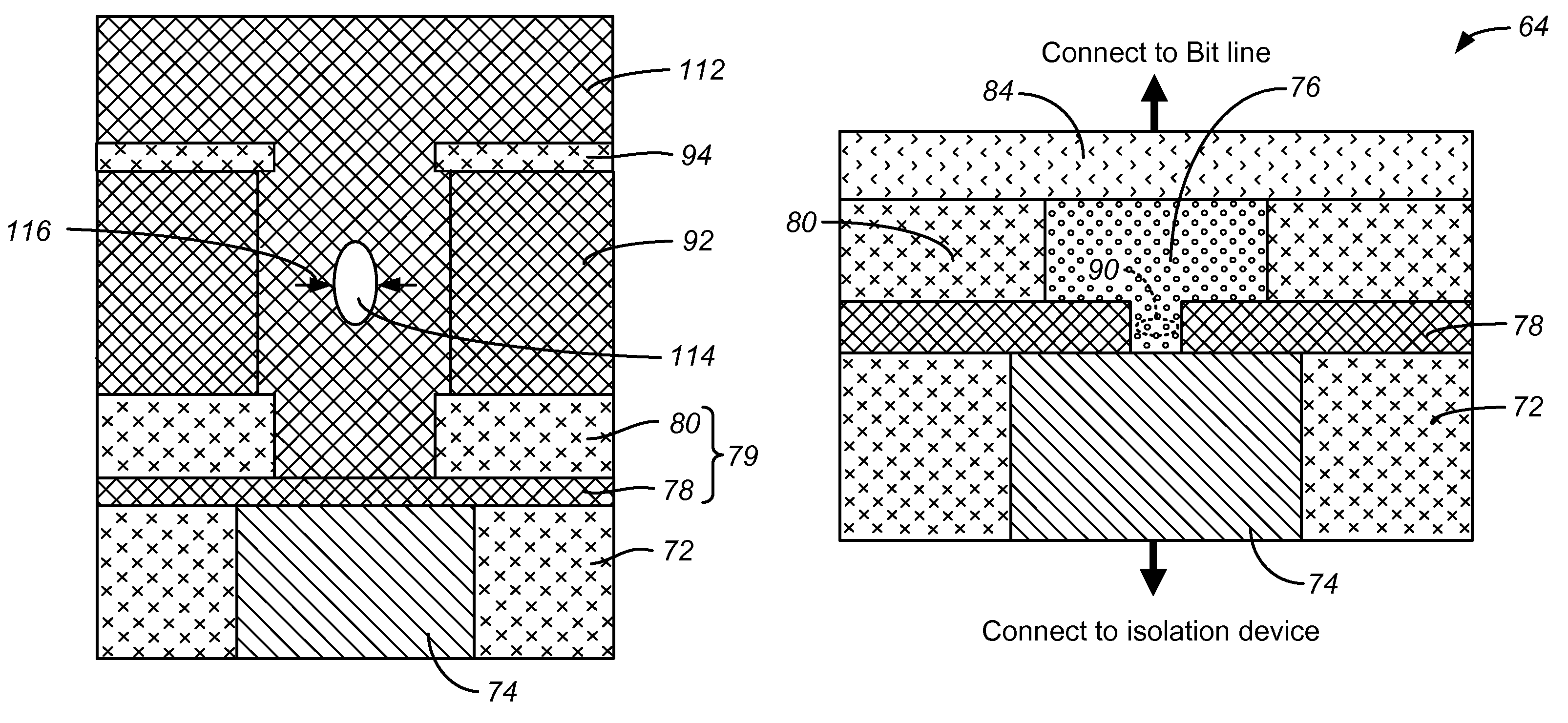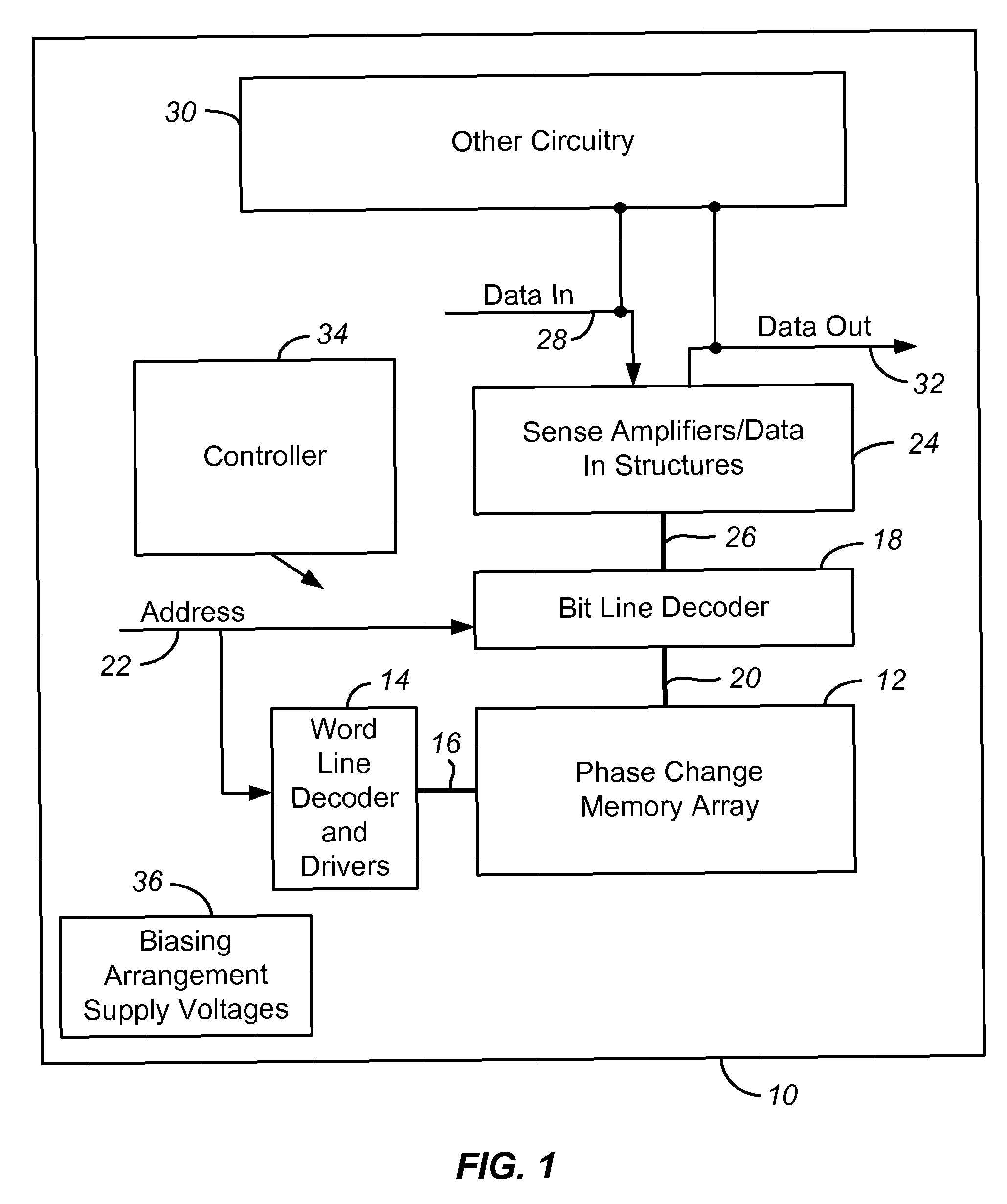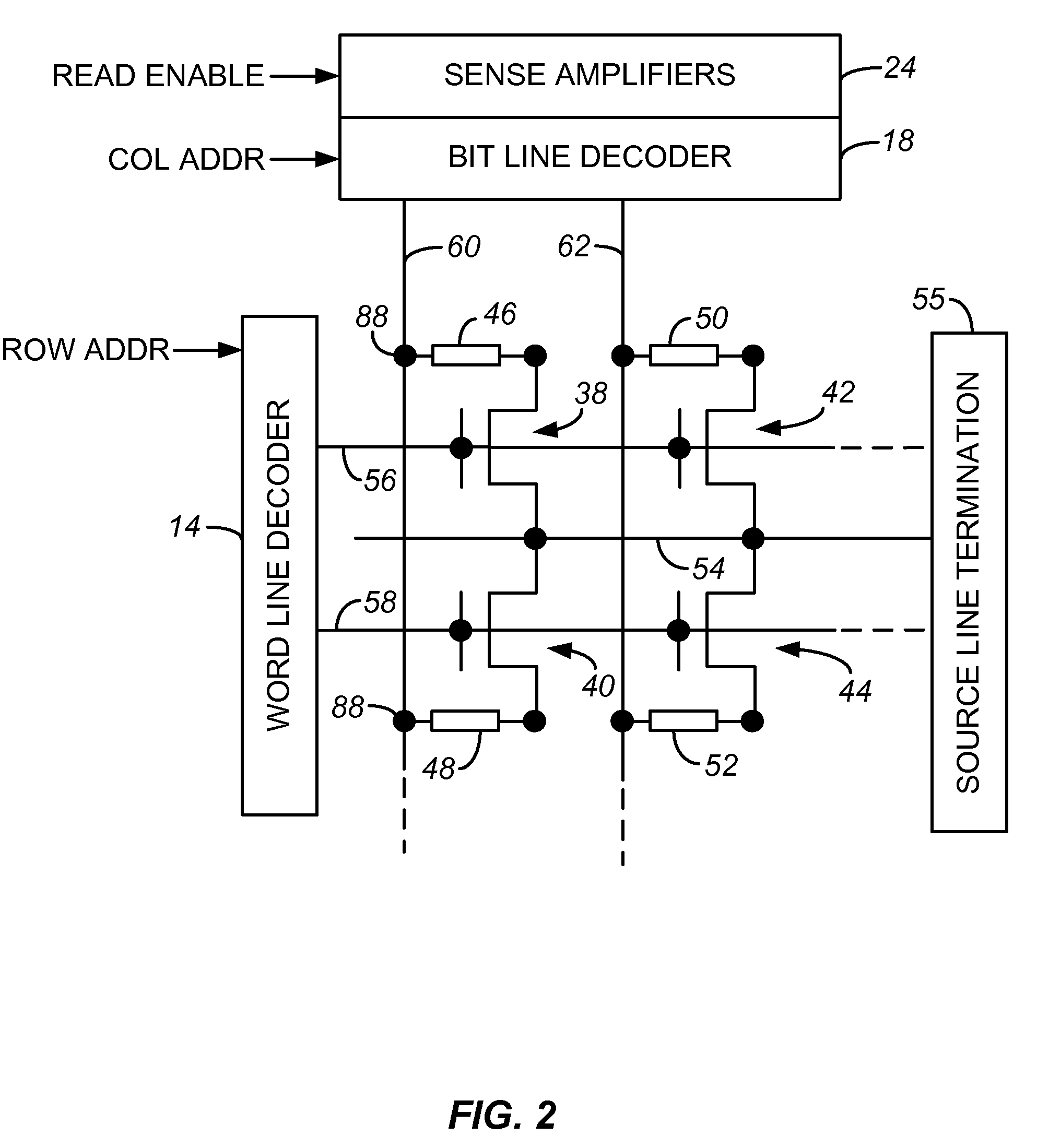Fill-in etching free pore device
a fill-in etching and free pore technology, applied in semiconductor devices, digital storage, instruments, etc., can solve the problems of high density memory devices, lack of uniformity or reliability needed for large scale, and limited cell manufacturing processes of standard integrated circuit manufacturing processes, so as to reduce the amount of current needed, reduce the magnitude of current, and small variation
- Summary
- Abstract
- Description
- Claims
- Application Information
AI Technical Summary
Benefits of technology
Problems solved by technology
Method used
Image
Examples
Embodiment Construction
[0022]The following description of the invention will typically be with reference to specific structural embodiments and methods. It is to be understood that there is no intention to limit the invention to the specifically disclosed embodiments and methods but that the invention may be practiced using other features, elements, methods and embodiments. Preferred embodiments are described to illustrate the present invention, not to limit its scope, which is defined by the claims. Those of ordinary skill in the art will recognize a variety of equivalent variations on the description that follows. Like elements in various embodiments are commonly referred to with like reference numerals.
[0023]Referring to FIG. 1, shown is a simplified block diagram of an integrated circuit 10 in which the present invention may be implemented. Circuit 10 includes a memory array 12 implemented using phase change memory cells (not shown) on a semiconductor substrate, discussed more fully below. A word line...
PUM
 Login to View More
Login to View More Abstract
Description
Claims
Application Information
 Login to View More
Login to View More - R&D
- Intellectual Property
- Life Sciences
- Materials
- Tech Scout
- Unparalleled Data Quality
- Higher Quality Content
- 60% Fewer Hallucinations
Browse by: Latest US Patents, China's latest patents, Technical Efficacy Thesaurus, Application Domain, Technology Topic, Popular Technical Reports.
© 2025 PatSnap. All rights reserved.Legal|Privacy policy|Modern Slavery Act Transparency Statement|Sitemap|About US| Contact US: help@patsnap.com



